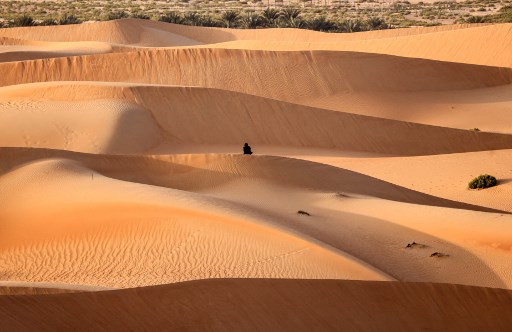
403
Sorry!!
Error! We're sorry, but the page you were looking for doesn't exist.
Explaining how dust from Sahara forms tropical hurricanes
(MENAFN) Tropical cyclones in the Atlantic Ocean, known for their fierce winds and heavy rainfall, have a surprisingly intricate relationship with the Sahara desert thousands of miles away. Recent research suggests that fine dust particles from the Sahara play a significant role in shaping the intensity and rainfall patterns of these storms.
According to a study conducted by Stanford University scientists, the presence of Sahara dust can influence tropical cyclones in multiple ways. One of the key findings is that these dust particles alter the size of cloud droplets within the cyclone clouds. This alteration can lead to heavier rainfall under certain conditions, enhancing the storm's precipitation capacity.
However, the relationship between Sahara dust and tropical cyclones is not straightforward. The study identified a "boomerang-shaped relationship," meaning that while moderate levels of dust tend to increase rainfall, peak dusty conditions can actually suppress precipitation. This phenomenon is particularly noticeable in areas closer to the African coast, where the dust concentration is typically higher.
Yuan Wang, one of the researchers involved in the study, highlighted the potential impact of global warming on this natural interaction. Changes in ocean wind patterns, influenced by climate change, could alter the amount of Saharan dust transported across the Atlantic. This shift might lead to variations in how tropical cyclones develop and behave in the future.
Looking ahead, the implications for rainfall from tropical cyclones depend significantly on where these storms make landfall in the Atlantic. The variability in dust levels and their effects on cloud formation suggest a nuanced relationship that could affect storm intensity and precipitation patterns differently across the region.
During the Atlantic hurricane season, which spans from June to November, meteorologists from the US government typically track numerous named storms and hurricanes. Understanding the role of Sahara dust in this context adds a new dimension to forecasting and preparing for these potentially devastating weather events.
In conclusion, while Sahara dust might seem remote from the Atlantic storms, its impact on tropical cyclones underscores the interconnectedness of global weather systems. Ongoing research will continue to unravel the complexities of this relationship, offering insights that could refine our understanding of how climate change influences tropical cyclone dynamics in the years to come.
According to a study conducted by Stanford University scientists, the presence of Sahara dust can influence tropical cyclones in multiple ways. One of the key findings is that these dust particles alter the size of cloud droplets within the cyclone clouds. This alteration can lead to heavier rainfall under certain conditions, enhancing the storm's precipitation capacity.
However, the relationship between Sahara dust and tropical cyclones is not straightforward. The study identified a "boomerang-shaped relationship," meaning that while moderate levels of dust tend to increase rainfall, peak dusty conditions can actually suppress precipitation. This phenomenon is particularly noticeable in areas closer to the African coast, where the dust concentration is typically higher.
Yuan Wang, one of the researchers involved in the study, highlighted the potential impact of global warming on this natural interaction. Changes in ocean wind patterns, influenced by climate change, could alter the amount of Saharan dust transported across the Atlantic. This shift might lead to variations in how tropical cyclones develop and behave in the future.
Looking ahead, the implications for rainfall from tropical cyclones depend significantly on where these storms make landfall in the Atlantic. The variability in dust levels and their effects on cloud formation suggest a nuanced relationship that could affect storm intensity and precipitation patterns differently across the region.
During the Atlantic hurricane season, which spans from June to November, meteorologists from the US government typically track numerous named storms and hurricanes. Understanding the role of Sahara dust in this context adds a new dimension to forecasting and preparing for these potentially devastating weather events.
In conclusion, while Sahara dust might seem remote from the Atlantic storms, its impact on tropical cyclones underscores the interconnectedness of global weather systems. Ongoing research will continue to unravel the complexities of this relationship, offering insights that could refine our understanding of how climate change influences tropical cyclone dynamics in the years to come.

Legal Disclaimer:
MENAFN provides the
information “as is” without warranty of any kind. We do not accept
any responsibility or liability for the accuracy, content, images,
videos, licenses, completeness, legality, or reliability of the information
contained in this article. If you have any complaints or copyright
issues related to this article, kindly contact the provider above.


















Comments
No comment